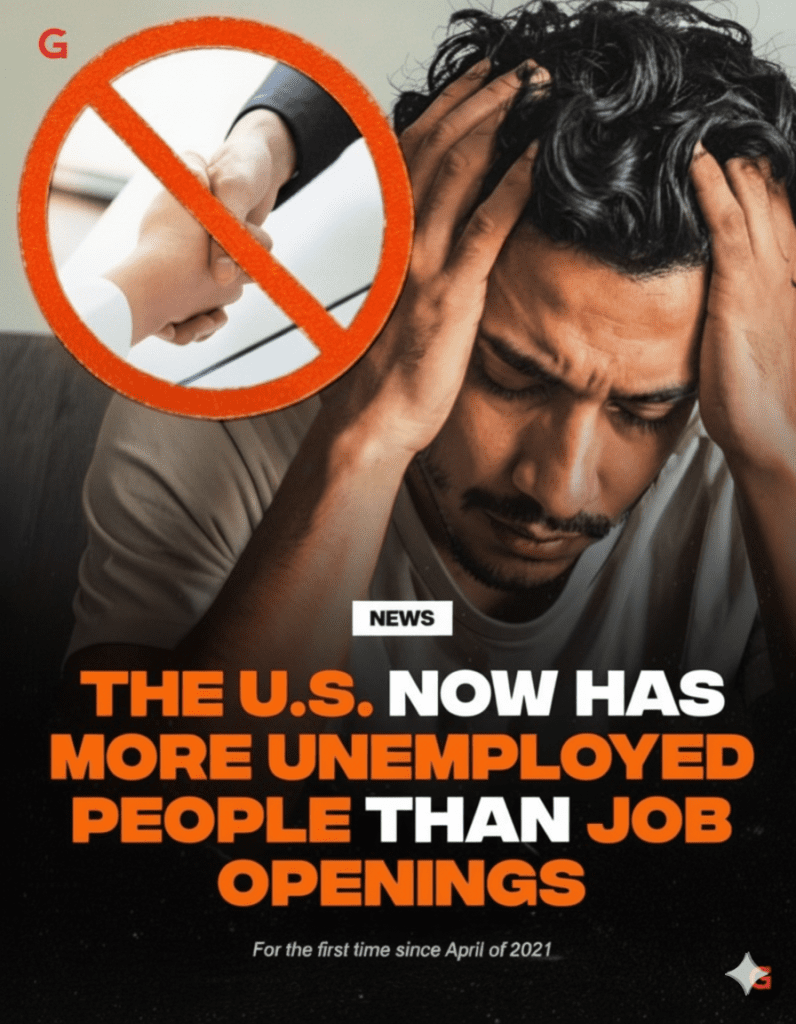For the First Time Since 2021, the U.S. Has More Unemployed People Than Job Openings, Highlighting a Cooling Job Market
For the first time in over three years, America is facing a shift in its job market that feels both unsettling and uncertain. In July, the number of unemployed people in the U.S. rose to about 7.24 million, while job openings fell to roughly 7.2 million. That may not seem like a huge gap at first glance, but it marks a significant turning point: there are now officially more people looking for work than there are available jobs. The last time this happened was back in April 2021, when the economy was still clawing its way out of the pandemic’s deepest scars.
The numbers tell a story that feels complicated. On the one hand, layoffs haven’t spiked dramatically, which means companies aren’t slashing jobs left and right. But on the other hand, hiring has clearly slowed down. Employers seem to be more cautious, pulling back on new roles, and leaving many job seekers waiting longer and struggling harder to land work. For the millions of people sending out resumes and hoping for callbacks, this means more competition for fewer opportunities, and that frustration is beginning to bubble over into the public conversation.

This change has real consequences for everyday people. Think of the recent college graduate who believed the job market would welcome them with open arms, only to find silence after dozens of applications. Or the mid-career worker laid off earlier this year who assumed finding a replacement position would take weeks, not months. For them, this news feels like confirmation of something they already suspected: finding a job right now is harder than it was even a few months ago.
The broader economy is giving mixed signals too. Inflation has cooled compared to its peak, and the Federal Reserve has hinted at possible shifts in its policies, but wages are not rising fast enough to make everyone feel secure. Meanwhile, industries like tech, finance, and retail have tightened their belts, limiting hiring despite profits. Small businesses, which often fuel local economies, are also holding back because of higher costs and uncertainty about demand. The result is a job market that feels stuck in a kind of middle ground—not collapsing, but not thriving either.

What makes this especially striking is how quickly things have changed. Not long ago, employers were desperate to find workers. “Help Wanted” signs were everywhere, and people were quitting jobs in record numbers during what was called the “Great Resignation,” confident they could find something better. Now, the balance has shifted. Job seekers no longer have the upper hand, and that tilt in power is already being felt in interviews, negotiations, and workplace dynamics.
Still, it’s worth remembering that numbers are only part of the picture. Millions of Americans are still working, still earning, and still building their futures. The labor market hasn’t collapsed, and the country isn’t facing the kind of massive unemployment crisis seen during the financial meltdown of 2008 or the peak of the pandemic. But for those searching right now, that distinction doesn’t offer much comfort. It feels like every missed opportunity is another reminder that the market isn’t working in their favor.

The coming months will matter a lot. If job openings rise again, this could simply be a blip, a pause before growth picks up. But if they continue to fall while unemployment rises, it could signal a deeper slowdown, one that shapes not just paychecks but the mood of the entire nation. After all, work isn’t just about money. It’s about stability, dignity, and the sense that you can take care of yourself and your family.
For now, people across the U.S. are waiting, hoping, and pushing forward, even when the odds feel tougher. And maybe that’s the lesson in this moment: the resilience of workers doesn’t vanish just because the numbers shift. People will keep applying, keep trying, and keep moving forward—because in the end, work is more than just statistics. It’s the heart of everyday life.


